Discover 35 hidden attractions, cool sights, and unusual things to do in Padua (Italy). Don't miss out on these must-see attractions: Orto botanico di Padova, Scrovegni Chapel, and Basilica of Saint Anthony of Padua. Also, be sure to include Basilica di Santa Giustina in your itinerary.
Below, you can find the list of the most amazing places you should visit in Padua (Veneto).
Table of Contents
Orto botanico di Padova
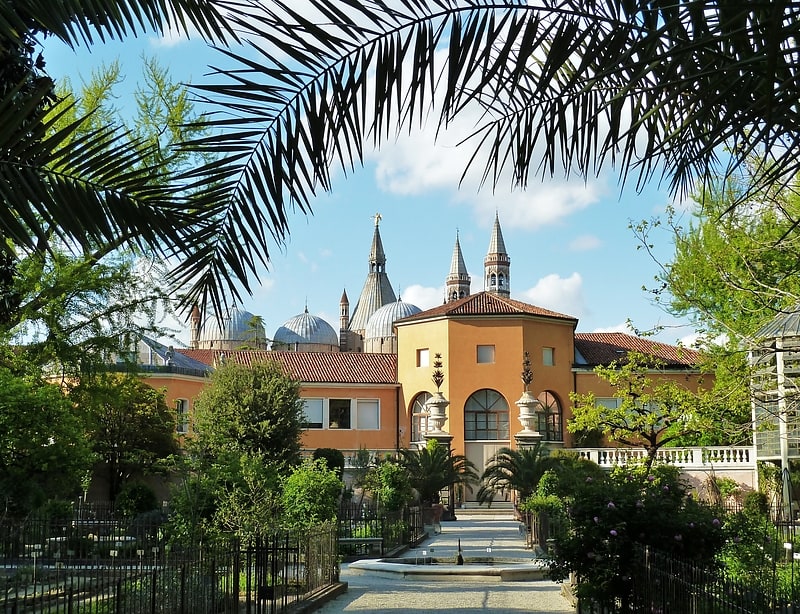
Botanical gardens founded in 1545. The Orto Botanico di Padova is a botanical garden in Padua, in the northeastern part of Italy. Founded in 1545 by the Venetian Republic, it is the world's oldest academic botanical garden that is still in its original location. The garden – affiliated with the University of Padua – currently covers roughly 22,000 square meters, and is known for its special collections and historical design.[1]
Address: Via Orto Botanico, 15, 35123 Padova
Scrovegni Chapel
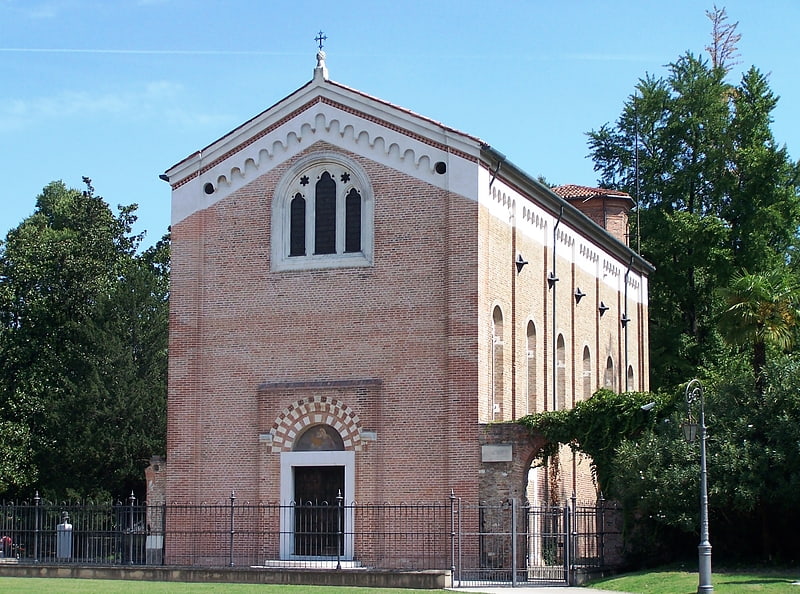
Also known as: Cappella degli Scrovegni
Medieval chapel lined with frescoes. The Scrovegni Chapel, also known as the Arena Chapel, is a small church, adjacent to the Augustinian monastery, the Monastero degli Eremitani in Padua, region of Veneto, Italy. The chapel and monastery are now part of the complex of the Museo Civico of Padua.
The chapel contains a fresco cycle by Giotto, completed about 1305 and considered to be an important masterpiece of Western art. In 2021, the chapel was declared part of the UNESCO World Heritage Site of the 14th-century fresco cycles comprehending 8 historical buildings in Padua city centre. Specifically the Scrovegni Chapel contains the most important frescoes that marked the beginning of a revolution in mural painting and influenced fresco technique, style, and content for a whole century.[2]
Address: Corso Giuseppe Garibaldi, 33, 35137 Padova
Basilica of Saint Anthony of Padua
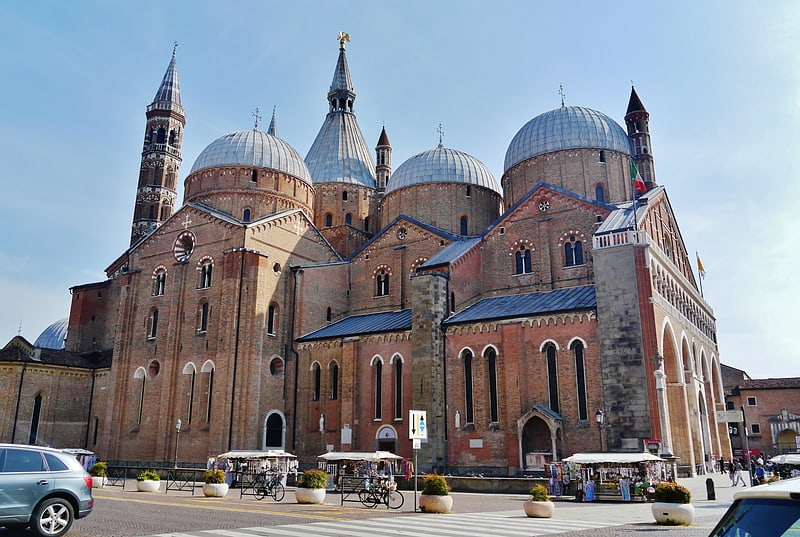
Also known as: Basilica di Sant'Antonio di Padova
Vast 1300s church with historic relics. The Pontifical Basilica of Saint Anthony of Padua is a Roman Catholic church and minor basilica in Padua, Veneto, Northern Italy, dedicated to St. Anthony. Although the Basilica is visited as a place of pilgrimage by people from all over the world, it is not the titular cathedral of the city, a title belonging to the Cathedral-Basilica of St. Mary of Padua. The basilica is known locally as "il Santo". It is one of the international shrines recognized by the Holy See.[3]
Address: Piazza del Santo, 11, 35123 Padova
Basilica di Santa Giustina
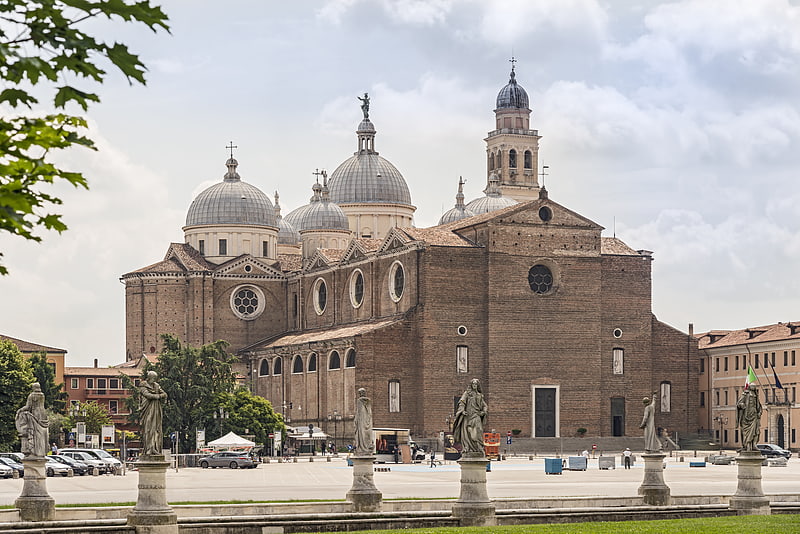
Historic abbey with notable artwork. The Abbey of Santa Giustina is a 10th-century Benedictine abbey complex located in front of the Prato della Valle in central Padua, region of Veneto, Italy. Adjacent to the former monastery is the basilica church of Santa Giustina, initially built in the 6th century, but whose present form derives from a 17th-century reconstruction.[4]
Address: Via Giuseppe Ferrari, 2 A, 35123 Padova
Villa Pisani

Baroque palace with a Tiepolo fresco. Villa Pisani at Stra refers to the monumental, late-Baroque rural palace located along the Brenta Canal at Via Doge Pisani 7 near the town of Stra, on the mainland of the Veneto, northern Italy. This villa is one of the largest examples of Villa Veneta located in the Riviera del Brenta, the canal linking Venice to Padua. The patrician Pisani family of Venice commissioned a number of villas, also known as Villa Pisani across the Venetian mainland. The villa and gardens now operate as a national museum, and the site sponsors art exhibitions.[5]
Address: Via Doge Pisani, 7, 30039 Stra
Scuola del Santo
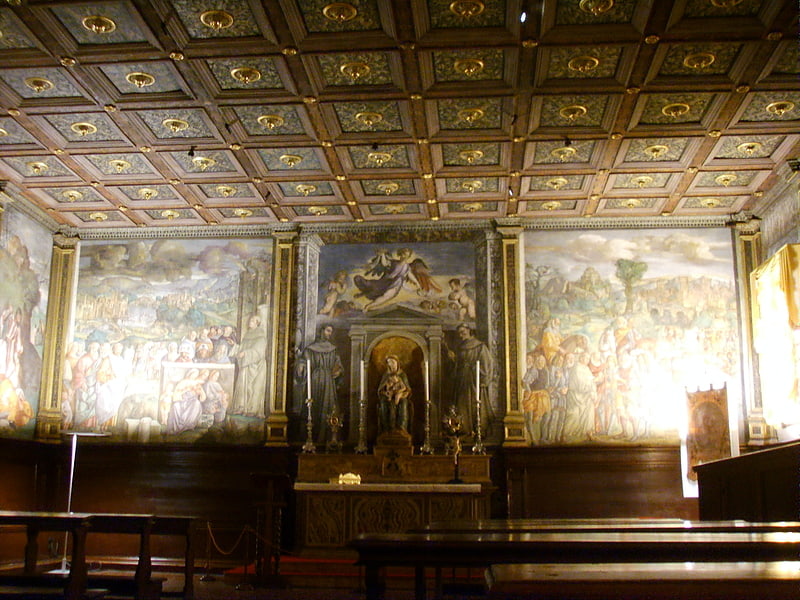
The Scuola del Santo or Scoletta was the headquarters of the Archconfraternity of St Anthony of Padua. It overhangs the churchyard of Basilica of Saint Anthony of Padua, next door to the St. George's Oratory.
The Confraternity built the Scoletta in 1427 and it was expanded in 1504 with the Sala Priorale decorated with a cycle of fifteen frescoes and three canvases, which were worked on by the young Titian between 1510 and 1511. He was entrusted with three frescos of miracles performed by Anthony of Padua, The Miracle of the Newborn, The Miracle of the Healed Foot and The Miracle of the Jealous Husband. The three large frescoes were painted by him between April and December 1511 in the main room of the Scuola del Santo – they were is first large-scale independent work. The raised arm of the wife in Husband is sculpted in relief rather than painted illusionistically.[6]
Prato della Valle
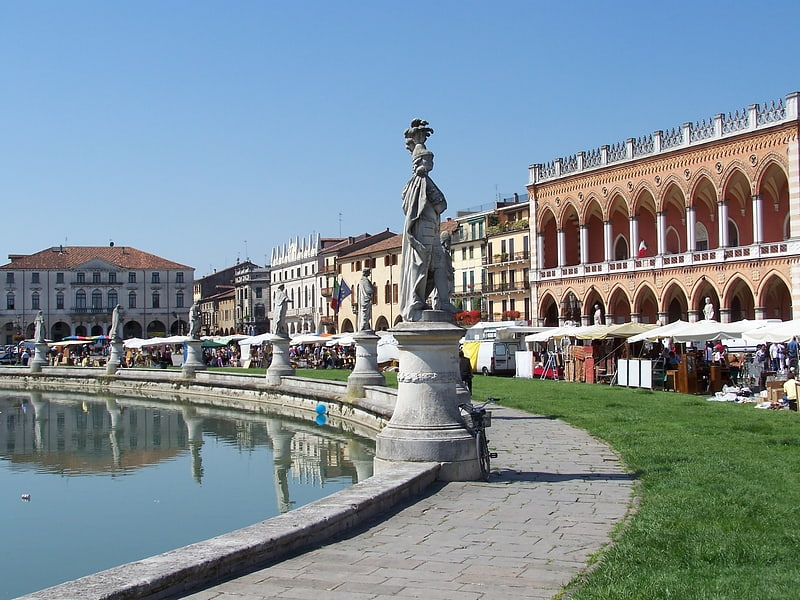
Prominent square with many statues. Prato della Valle is a 90,000-square-meter elliptical square in Padova, Italy. It is the largest square in Italy, and one of the largest in Europe. Today, the square is a large space with a green island at the center, l'Isola Memmia, surrounded by a small canal bordered by two rings of statues.[7]
Address: Prato della Valle, Padua
Palazzo della Ragione
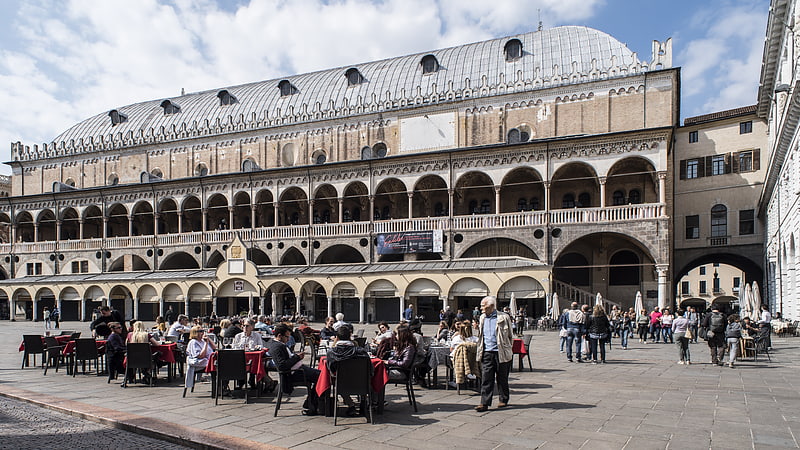
Medieval civic building with food shops. The Palazzo della Ragione is a medieval market hall, town hall and palace of justice building in Padua, in the Veneto region of Italy. The upper floor was dedicated to the town and justice administration; while the ground floor still hosts the historical covered market of the city. The palace separates the two market squares of Piazza delle Erbe from Piazza dei Frutti. It is popularly called "il Salone". It is part of the UNESCO World Heritage Site of Padua's 14th-century fresco cycles.[8]
Address: Piazza delle Erbe, 35100 Padova
Museum of Precinema
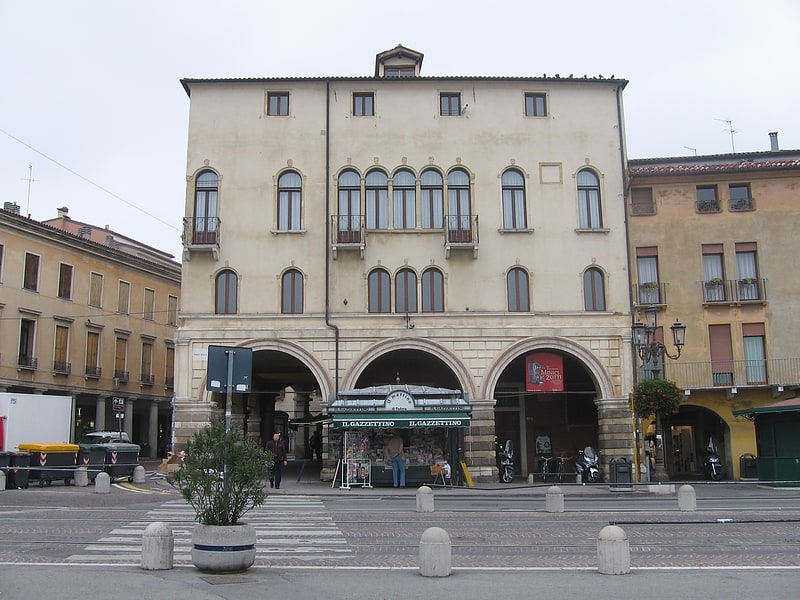
Also known as: Museo del precinema
Museum in Padua. The Museum of Precinema is a museum in the Palazzo Angeli, Prato della Valle, Padua, Italy, related to the history of precinema, or precursors of film. It was created in 1998 to display the Minici Zotti Collection, in collaboration with the Comune di Padova. It also produces interactive touring exhibitions and makes valuable loans to other prestigious exhibitions such as 'Lanterne magique et film peint' at the Cinémathèque Française in Paris and the Museum of Cinema in Turin.[9]
Address: Prato della Valle, 12, 35123 Padova
Anatomical Theatre of Padua
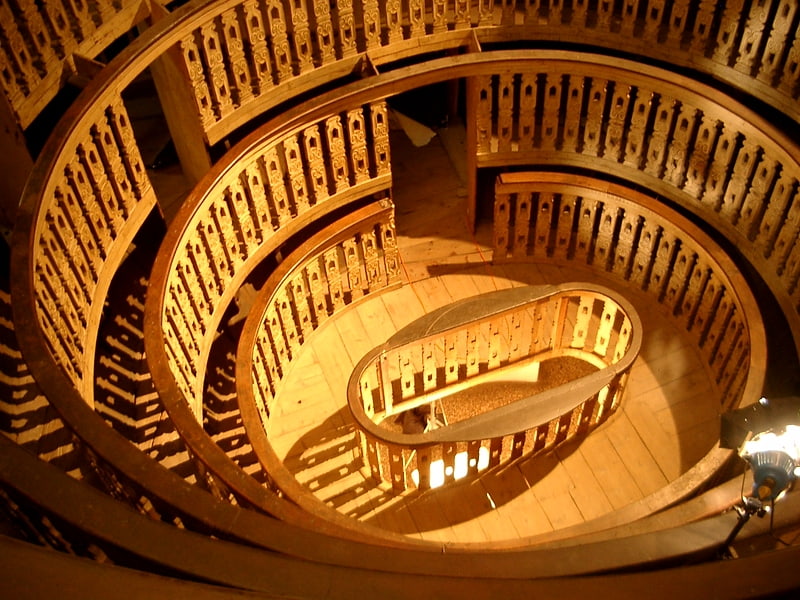
The Anatomical Theatre of Padua, Northern Italy, is the first permanent anatomical theatre in the world. Still preserved in the Palazzo del Bo, it was inaugurated in 1595 by Girolamo Fabrici of Acquapendente, according to the project of Paolo Sarpi and Dario Varotari. This theatre constituted the model for the anatomical theatres built during the seventeenth century in the main universities of Europe: all would have been based on the Paduan archetype. It is the emblem of a great successful period for Padua's University, and it is considered one of the most important achievements for the study of anatomy during the sixteenth century.[10]
San Michele Oratory
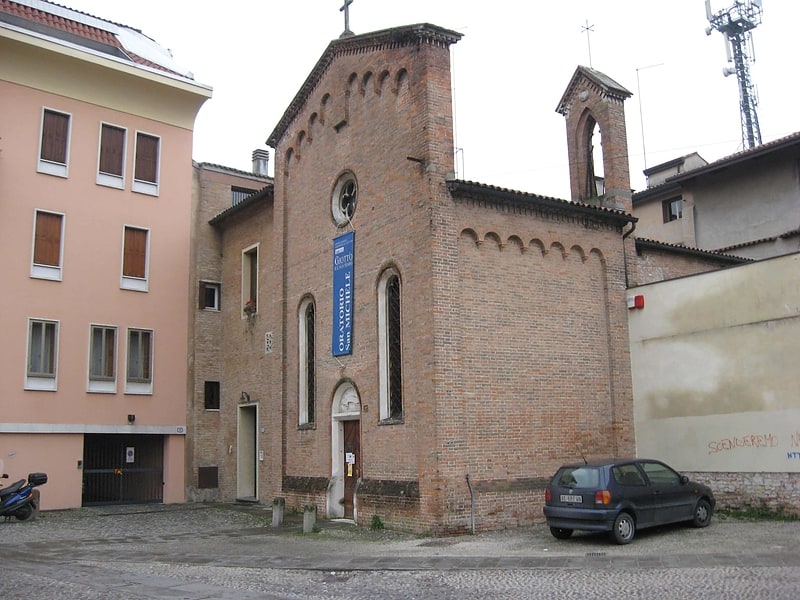
The San Michele Oratory or Oratory of San Michele is an oratory chapel in Padova, Italy. The interior is painted with a cycle of frescoes on the life of the Virgin Mary by Jacopo da Verona.[11]
Address: Riviera Tiso da Camposampiero, 32, 35013 Padova
Oratory of San Giorgio
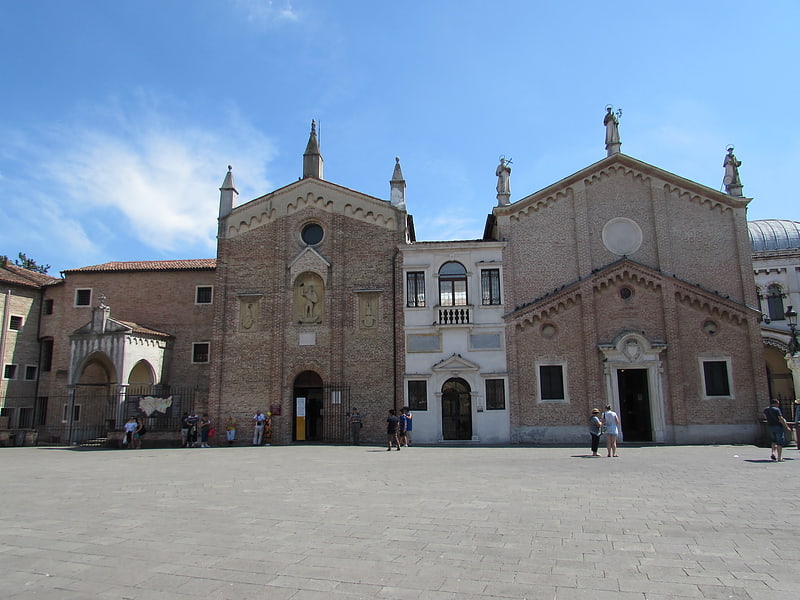
Also known as: Oratorio di San Giorgio
Chapel in Padua, Italy. The Oratorio di San Giorgio or St George's Oratory is a Gothic-style Roman Catholic chapel or prayer hall in Padua, region of Veneto, Italy. It is notable for its frescoed interiors.[12]
Address: Piazza del Santo 11, 35123 Padua
Stadio Euganeo
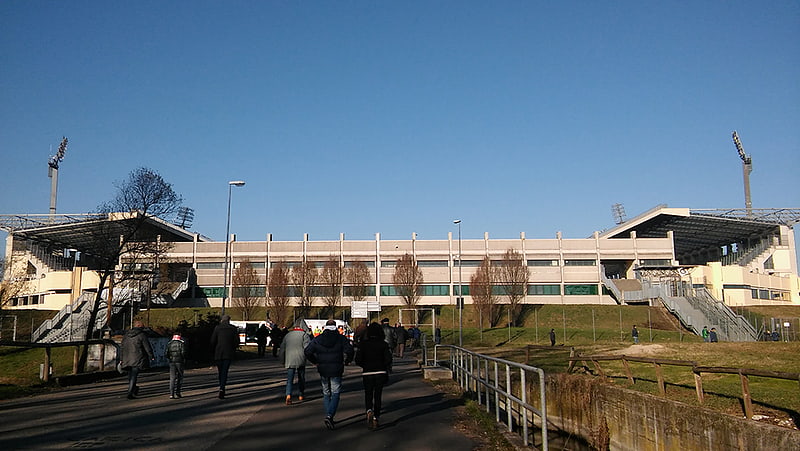
Stadium in Padua, Italy. Stadio Euganeo is a football stadium in Padua, Italy. It is also used for athletics, concerts, rugby league and rugby union. It replaced the old and historical Appiani stadium.
From 1994 to the present, it is the home of Calcio Padova. It has a total capacity of 32,420.
Due to strict Italian laws about security in football matches, for football only the stadium capacity can be reduced to 18,060 places.
It also played temporary host to Treviso for their first few matches in Serie A in the 2005–06 season, as their ground, Stadio Omobono Tenni, was deemed unfit; and to Cittadella, when playing her first two Serie B championships in the 2000–01 and 2001–02 seasons.
By 2010–2011 season it has been used also for the home matches of the second football team of the city, San Paolo Padova, playing in Serie D.
Euganeo hosted the international rugby match Italy-Australia (20–30) on 8 November 2008, with an attendance of about 30,000 people, likely being the most attended rugby match in Italy.
On 22 November 2014, it hosted Italy's end-of-year rugby union international against South Africa who won 22–6.
The original Stadio Euganeo had previously hosted a rugby league international between Italy and Australia on 23 January 1960. Played as part of the 1959-60 Kangaroo tour of Great Britain and France, the Kangaroos defeated the home side 37–15 in front of a modest crowd of 3,500 curious fans.[13]
Address: Viale Nereo Rocco, 60, 35125 Padova
Loggia e Odeo Cornaro
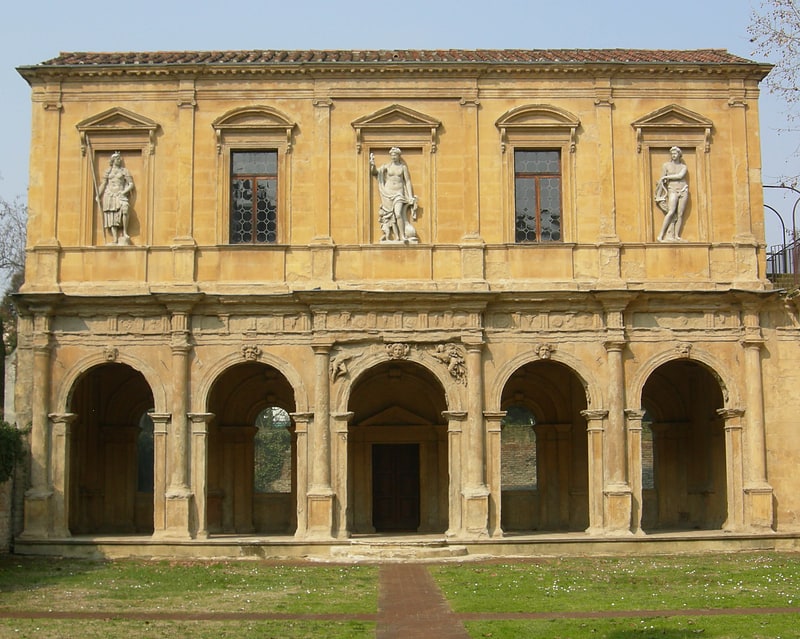
The Loggia and Odeo Cornaro are two Renaissance buildings, built in the 16th century for the humanist Alvise Cornaro and hosting theater and music performances, locate in via Cesarotti 37 in Padua, region of Veneto, Italy. They are now part of the city's museums.[14]
Address: Via Cesarotti, 37, 35122 Padua
Gattamelata
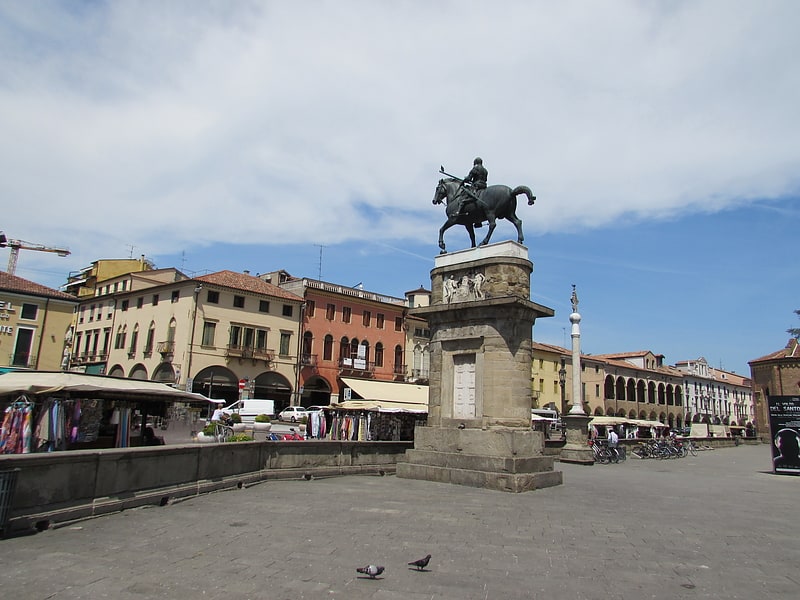
Celebrated bronze equestrian statue. The Equestrian Statue of Gattamelata is a sculpture by Italian early Renaissance artist Donatello, dating from 1453, located in the Piazza del Santo in Padua, Italy, today. It portrays the Renaissance condottiero Erasmo da Narni, known as "Gattamelata", who served mostly under the Republic of Venice, which ruled Padua at the time.[15]
Address: Piazza del Santo, 35100 Padua
PalaFabris
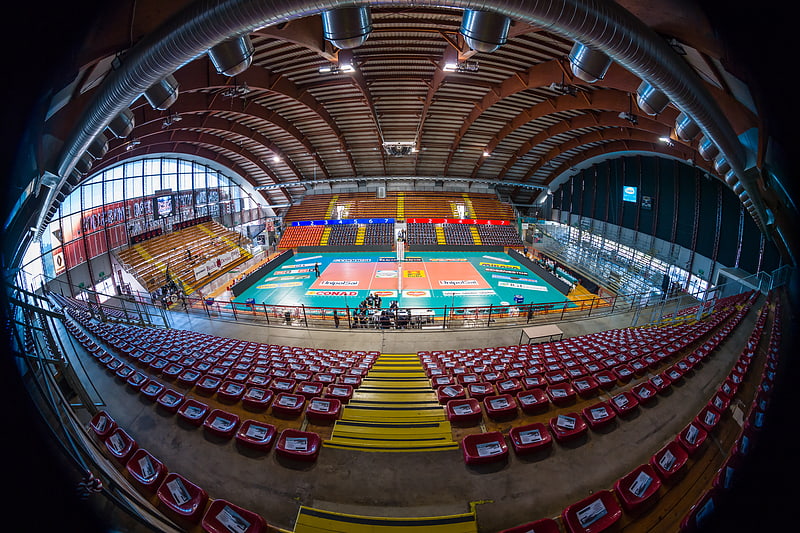
Also known as: Palasport San Lazzaro
Sports arena in Padua, Italy. Kioene Arena is an indoor sports arena located in Padua, Italy. The arena has a seating capacity of 3,916 for volleyball and is primarily used for basketball, futsal and handball. It also hosts live concerts.
The Forum is the home floor of the professional volleyball team Pallavolo Padova.[16]
Address: Via San Marco, 53, 35129 Padova
Padua Baptistery
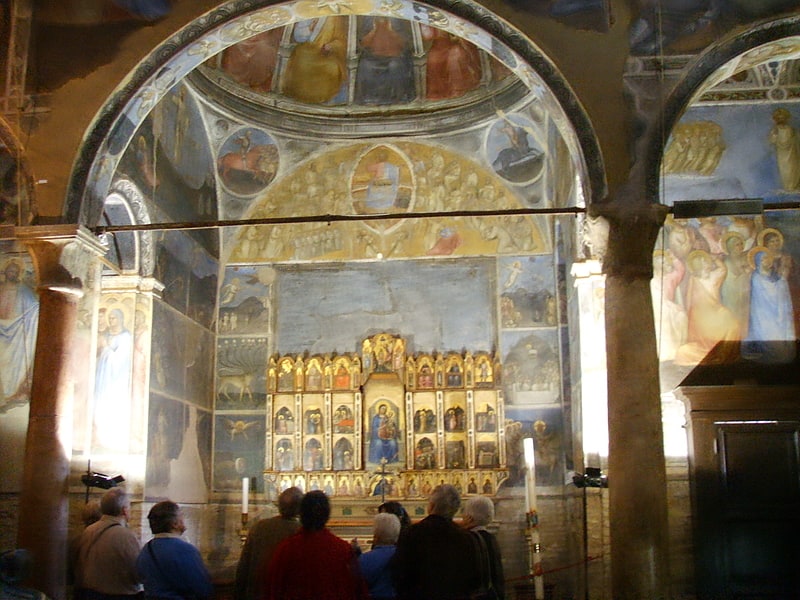
Also known as: Battistero di Padova
The Padua Baptistery, dedicated to St. John the Baptist, is a religious building found on the Piazza del Duomo next to the cathedral in Padua. Preserved inside is one of the most important fresco cycles of the 14th century, a masterpiece by Giusto de Menabuoi.[17]
Address: Piazza del Duomo, 35141 Padua
Santa Maria dei Servi
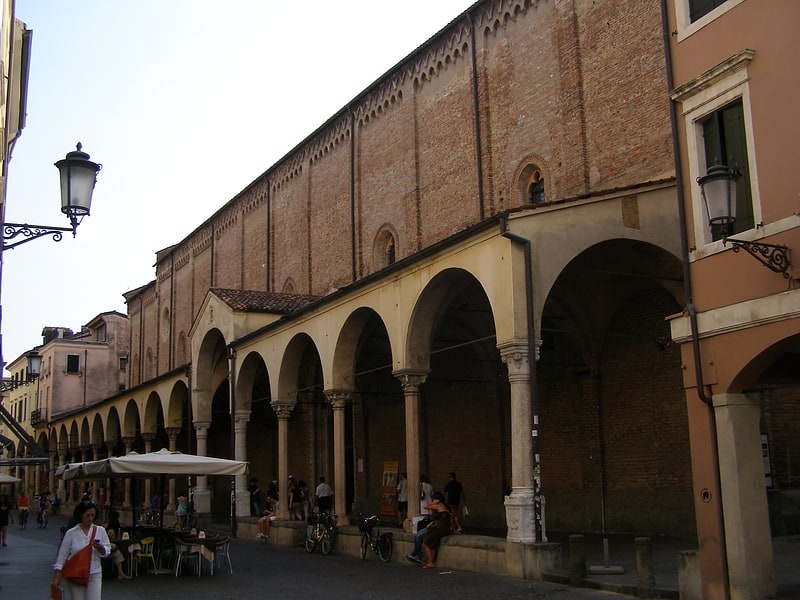
Parish in Padua, Italy. Santa Maria dei Servi, or simply known as the Chiesa dei Servi, or more fully as the Church of the Nativity of the Servants of the Blessed Virgin Mary, is a 14th-century, Roman Catholic church that faces the Via Roma in Padua, region of the Veneto, Italy. This is the parish church in the vicariate of the Cathedral Basilica of Santa Maria Assunta governed by the Servite Order. The church contains outstanding works of art including a wooden crucifix by Donatello.[18]
Address: Vicolo dei Servi, 3, 35122 Padova
Bo Palace
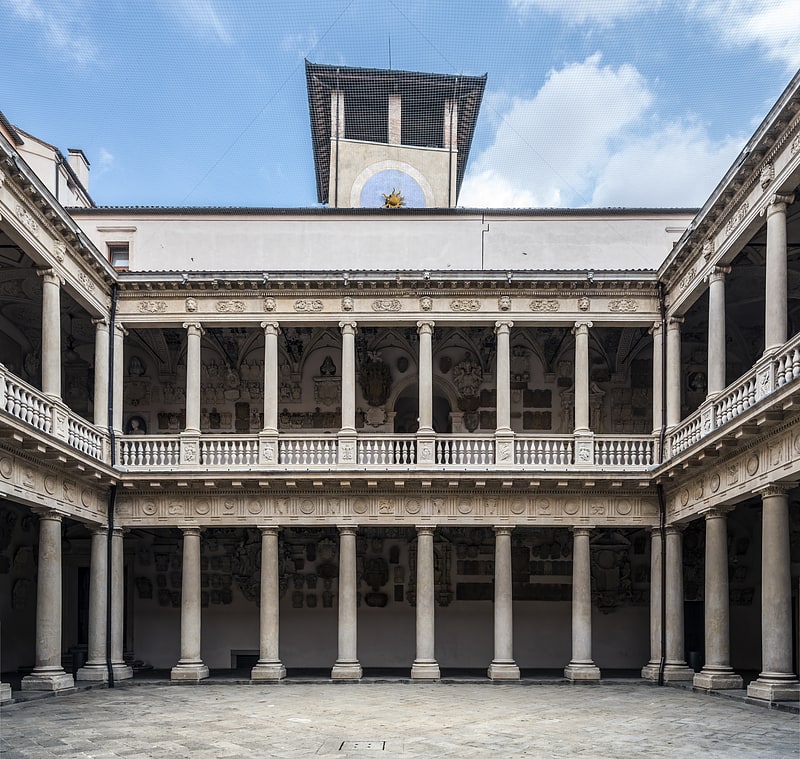
Also known as: Palazzo del Bo
Historical place in Padua, Italy. The Bo Palace, is the historical seat of University of Padua since 1493, It is still home to the Rectorate and the School of Law. It is also home to the oldest anatomical theatre in the world.[19]
Piazza delle Erbe

Piazza delle Erbe is one of the many squares in the historic center of Padua. For centuries, with Piazza della Frutta, it was the commercial center of the city. In the two squares is one of the largest markets in Italy. Unlike Piazza dei Signori, the civic theater of celebrations, Piazza delle Erbe was the site of the folk festivities. The square is dominated by the imposing Palazzo della Ragione.[20]
Address: Piazza delle Erbe, 35141 Padua
Basilica del Carmine
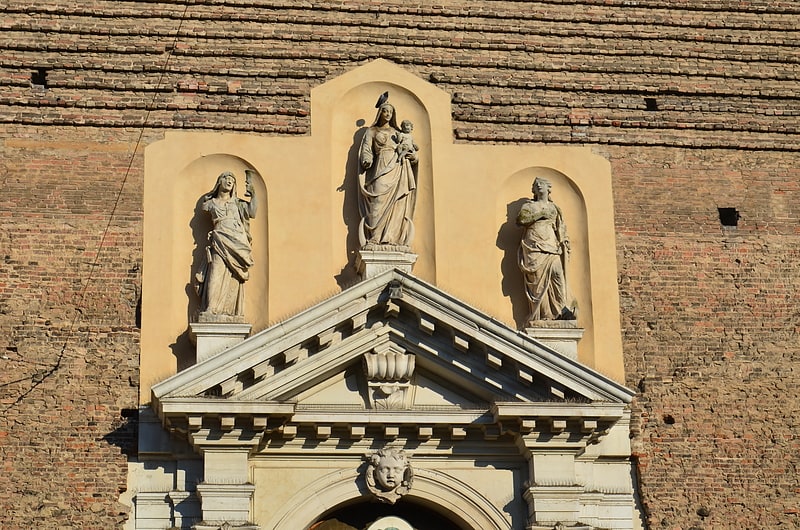
The Basilica del Carmine is a 16th-century Roman Catholic church located on piazza Francesco Petrarca in Padua, region of Veneto, Italy. It was made a minor basilica in 1960 by pope John XXIII[21]
Address: Piazza Petrarca, 1, 35137 Padova
Padua Cathedral
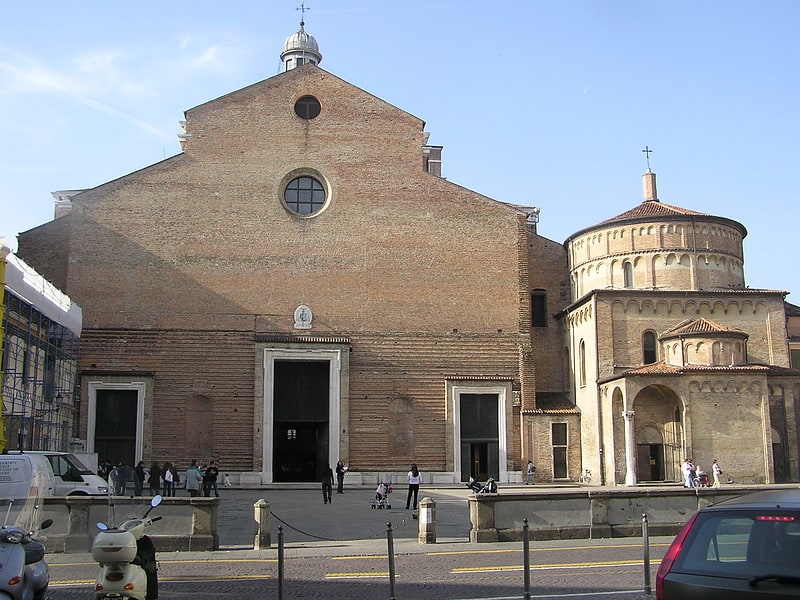
Also known as: Duomo di Padova
Medieval-era Roman Catholic cathedral. Padua Cathedral, or Basilica Cathedral of Saint Mary of the Assumption, is a Roman Catholic minor basilica and the cathedral located on the east end of Piazza Duomo, adjacent to the Bishop's palace, in Padua, region of Veneto, Italy. The cathedral, dedicated to the Assumption of the Virgin Mary, is the seat of the bishop of Padua. The church building, first erected as seat of a bishop of the diocese in the 4th century, has undergone major reconstructions over the centuries.[22]
Address: Piazza del Duomo, Padua
Oratory of San Rocco

Museum in Padua, Italy. The Oratory of San Rocco is a Renaissance style, Roman Catholic church located in the city center of Padua, region of Veneto, Italy. It arises adjacent to the church of Santa Lucia, and is notable for its collection of frescoes.[23]
Walls of Padua
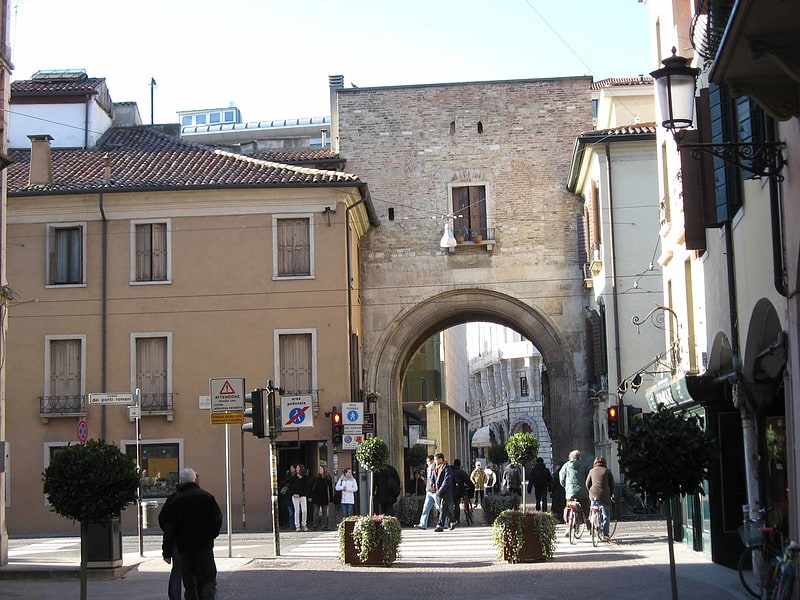
Also known as: Mura di Padova
The Walls of Padua are a complex of defensive works around the Italian city of Padua, designed to defend it from hostile attack. It was built in 4 phases.[24]
Piazza dei Signori
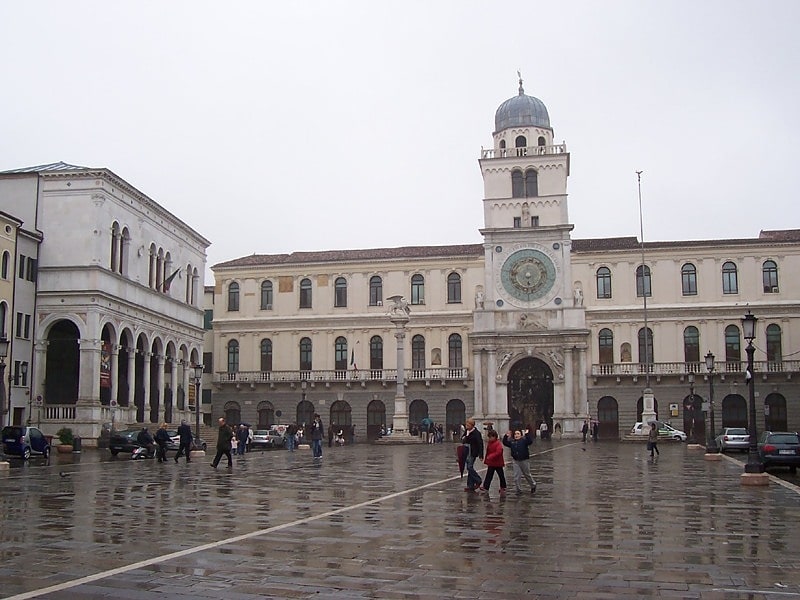
Historical landmark in Padua, Italy. Piazza dei Signori is a city square in Padua, region of Veneto, Italy. This piazza for centuries hosted official civic and government celebrations, while the larger squares of Piazza delle Erbe and Piazza della Frutta hosted commerce and public festive celebrations. The square is dominated by the famous Clock Tower.[25]
Address: Piazza dei Signori, Padua
Arco Vallaresso

The Triumphal Arch of Vallaresso, or locally referred to as the Arco Vallaresso is a 17th-century monumental arch in the town center of Padua, region of Veneto, Italy. In 1632, the arch, designed by Giambattista della Scala, was meant to honor Alvise Vallaresso, Venetian captain of the town, for his diligence in attempting to stem the Bubonic plague in Padua.[26]
Chiesa degli Eremitani

Catholic church in Padua, Italy. The Church of the Eremitani, or Church of the Hermits, is a former-Augustinian, 13th-century Gothic-style church in Padua, region of the Veneto, Italy. It is also now notable for being adjacent to the Cappella Scrovegni with Giotto frescoes and the municipal archeology and art gallery: the Musei Civici agli Eremitani, which is housed in the former Augustinian monastery located to the left of the entrance.[27]
Address: Piazza Eremitani, 9, 35129 Padova
Palazzo Zabarella
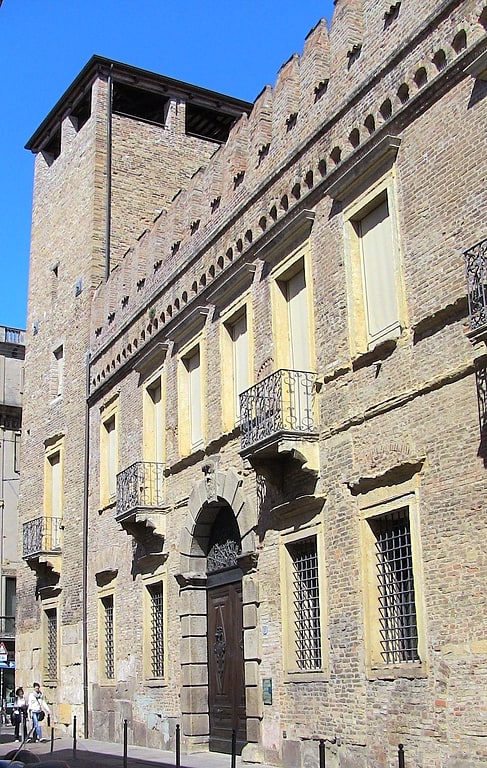
Modern art museum in Padua, Italy. The Palazzo Zabarella is a medieval, fortress-like palace with a crenellated roof-line, and corner tower, located on Via San Francesco 27 in the center of Padua, Italy. The building now houses the Fondazione Bano, and serves as a locale for cultural events and exhibition.[28]
Address: Via Zabarella, 14, 35121 Padova
Ponte Molino

Bridge in Padua, Italy. The Ponte Molino is a Roman bridge across the Bacchiglione in Padua, Italy. The span-to-rise ratio of the Late Republican bridge varies between 3.5–4.5 and 1, the ratio of clear span and pier thickness between 4–6.5 and 1.
Apart from the Ponte Molino, there are other extant Roman bridges in Padua: Ponte San Lorenzo, Ponte Altinate and Ponte Corbo, all three also featuring segmented arches, as well as Ponte S. Matteo.[29]
Address: Via Dante, 35100 Padua
Palazzo Zuckermann
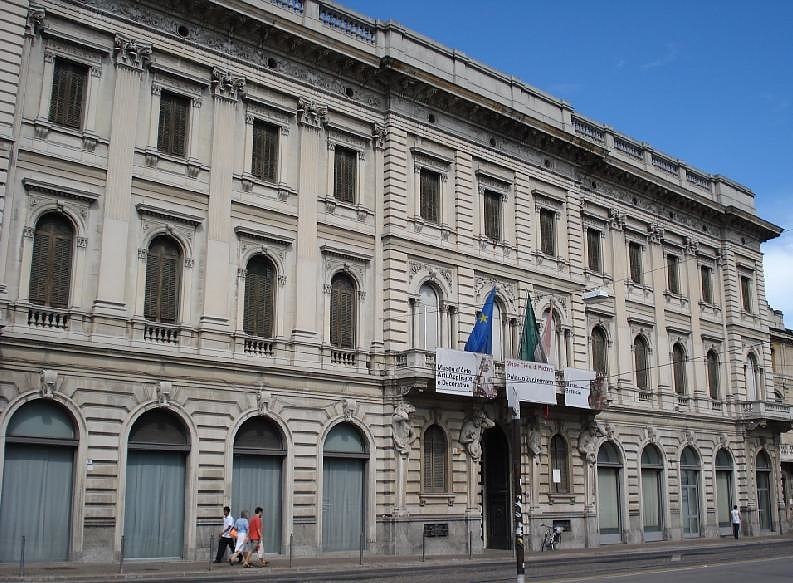
The Palazzo Zuckermann is a palace located on corso Garibaldi in Padua, Italy. The building now houses the collections of the Museo di arti applicate e decorative on the first floor and the Museo Bottacin on the second floor; these collections form part of the Civic Museum of Padua. It stands across the street from the Cappella degli Scrovegni and the Museo agli Eremitani; the latter houses the main art gallery of the civic Museum of Padua.
The palace was commissioned by the wealthy industrialist Erico Zuckermann, and built by the architect Arosio in 1912–1914. In the 20th-century, the palace became used as the main post office building for Padua.
The Museo di arti applicate e decorative contains craftworks dating from the medieval to late 19th-century. The Museo Bottacin displays the eclectic collections donated to the city by the businessman Nicola Bottacin in 1865. It contains both paintings and sculptures, including from Felice Schiavoni, Antonio Zona, Cristoforo Dall'Acqua, Gerolamo Induno, Pietro Magni, and Vincenzo Vela. The collection includes paintings and statuary, but is best known for its numismatic collections.[30]
Address: Corso Giuseppe Garibaldi, 35137 Padova
Church of Sant'Andrea

Also known as: Chiesa di Sant'Andrea
Sant'Andrea is a Roman Catholic church located on Via Sant'Andrea in Padua, region of Veneto, Italy. Founded by the 12th-century as a parish church, the present church was completed in the late 19th century.[31]
Diocesan museum of Padua

Also known as: Museo diocesano di Padova
Museum in Padua, Italy. The Diocesan museum of Padua displays arts and artifacts belonging to the Roman Catholic Diocese of Padua; it is housed in the 15th-century former bishop's residence or Palazzo Vescovile. The building, adjacent to the Cathedral of Padua, faces the Piazza del Duomo, can in the historic center of Padua, region of Veneto, Italy.
Many of the works in the museum derive from the cathedral or from other diocesan churches, some suppressed and no longer extant. The collections date from the 9th to the 19th centuries. They are displayed on two separate floors and are ordered chronologically and by type.[32]
Address: Piazza Duomo, 12, 35139 Padova
Giardini della rotonda di Padova

Garden in Padua, Italy. The gardens of the rotonda is a terraced garden, situated close to the historical centre of Padua, behind the sixteenth century wall and the Rampart of the Cat.[33]
Address: piazzale Mazzini, 35138 Padova
Santa Sofia
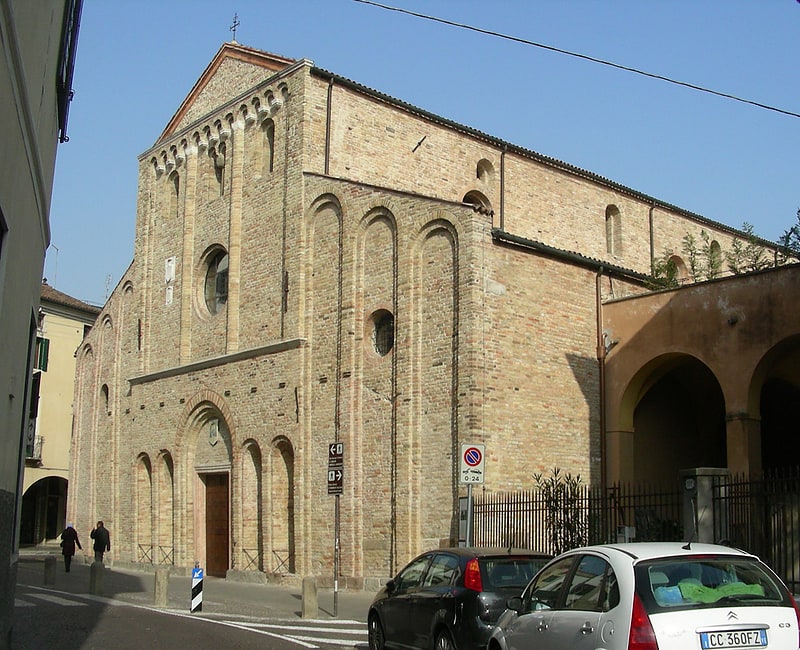
Santa Sofia is the oldest Roman Catholic church structure in the city of Padua, region of Veneto, Italy. It was built in the 10th century on the site of a presumed Mithraeum. A grant was made to bishop Sinibaldo of this church in 1123, which had already been in construction. The Romanesque stone and brick facade was constructed from 1106 to 1127, but the semicircular apse may date from earlier. The interior is now relatively bare.[34]
Address: Via Santa Sofia, 102, 35121 Padova
Piazza Duomo
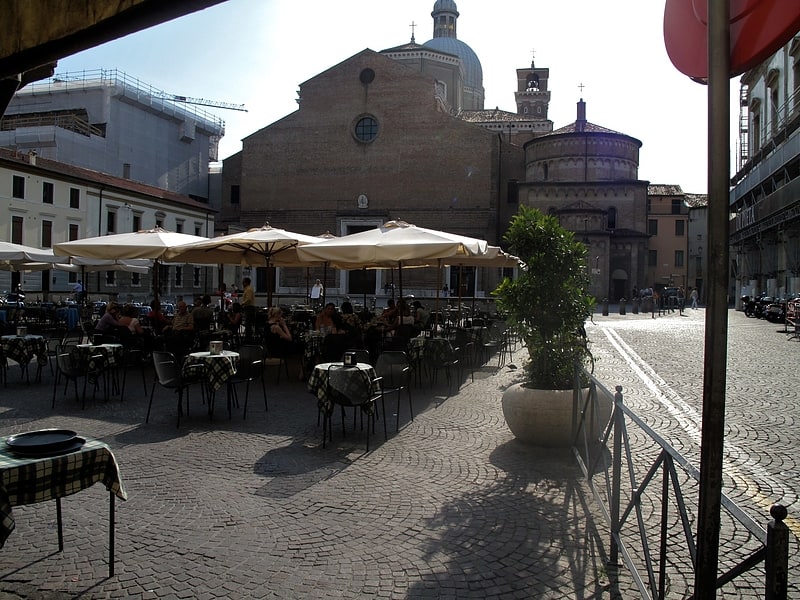
Piazza Duomo is a city square in Padua, Italy.[35]
Address: Piazza del Duomo, Padua